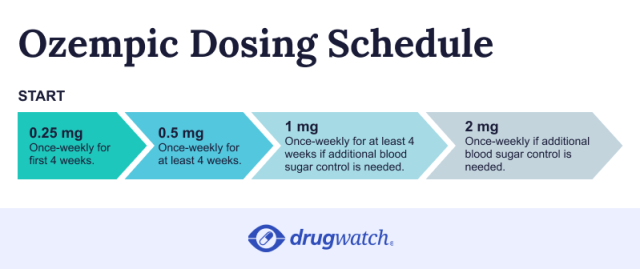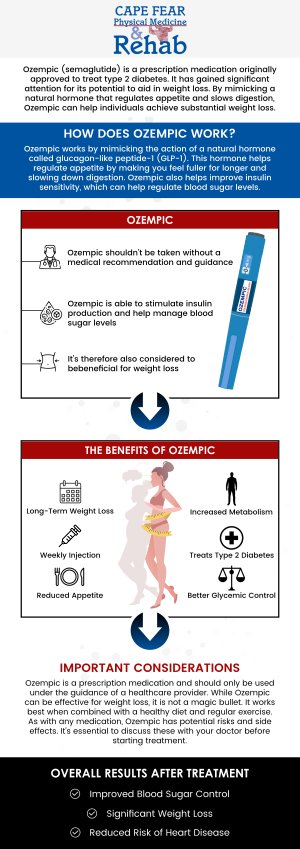What Is Step Therapy For Ozempic

Faced with rising costs and increasing demand for the diabetes and weight-loss drug Ozempic, some insurance companies and pharmacy benefit managers (PBMs) are implementing a practice called step therapy. This approach requires patients to try alternative, often less expensive, medications before gaining access to Ozempic.
Step therapy, also known as "fail first," isn't a new concept in healthcare. However, its increasing application to Ozempic has sparked debate about access to medication, potential health risks, and the role of insurance companies in treatment decisions.
Understanding Step Therapy
Step therapy is a utilization management tool used by insurance companies and PBMs to control costs and encourage the use of preferred, typically lower-cost, medications. The core principle is that patients must first try and fail on a designated "first-line" treatment before the insurer will cover a more expensive "second-line" option, like Ozempic.
The goal is to ensure that patients are using the most cost-effective treatment options while still receiving appropriate medical care. Insurers argue that this process can prevent unnecessary spending on more expensive medications when cheaper alternatives might be equally effective.
Who is affected? Individuals with type 2 diabetes or those seeking weight loss benefits who have Ozempic prescribed by their doctor, and whose insurance plan includes step therapy requirements. What happens is that they are required to try other medications first. When this applies is generally at the beginning of a new prescription or when changing insurance plans. Where this is happening is across the United States, with various insurance companies and PBMs adopting the practice.
How Step Therapy Works for Ozempic
When step therapy is applied to Ozempic, a patient might be required to first try other diabetes medications like metformin or sulfonylureas. These are typically older, generic drugs with a lower price tag compared to Ozempic.
The patient's doctor must then document that these alternative medications were ineffective or caused intolerable side effects. Only after this "failure" is documented will the insurance company approve coverage for Ozempic.
The specific medications required as "first-line" treatments can vary depending on the insurance plan and the PBM managing the benefits. Some plans may require trying multiple alternatives before approving Ozempic.
The Debate Surrounding Step Therapy
Step therapy is a contentious practice. Proponents argue it saves money for both insurers and patients in the long run by promoting the use of cost-effective treatments.
Critics argue that it can delay access to the most appropriate medication for a patient, potentially leading to poorer health outcomes. They say that forcing patients to try medications that are known to be less effective or have more side effects can be detrimental to their health and well-being.
There are also concerns about the administrative burden of step therapy. Doctors must spend time and resources documenting the patient's experience with alternative medications, which can detract from their ability to provide direct patient care.
Potential Impacts and Concerns
The implementation of step therapy for Ozempic can have several potential impacts.
Firstly, it may delay access to Ozempic for patients who could benefit most from it. This delay could lead to worsening blood sugar control in patients with type 2 diabetes, or hinder weight loss efforts in those using the drug for that purpose.
Secondly, it could increase the risk of adverse effects from the "first-line" medications. Some patients may experience intolerable side effects or allergic reactions to these alternative drugs, which could necessitate additional medical care.
"This is a classic example of insurers prioritizing cost savings over patient health," said Dr. Emily Carter, an endocrinologist at a major medical center. "Ozempic is not always the first choice, but for some patients, it's the best option, and delaying access can have serious consequences."
Seeking Alternatives and Navigating the System
Patients facing step therapy requirements have options. They should first discuss their concerns with their doctor, who can advocate on their behalf with the insurance company.
Doctors can submit a prior authorization request, arguing that Ozempic is the most appropriate medication for the patient's specific condition and medical history. They can also provide evidence that alternative medications are likely to be ineffective or cause adverse effects.
Patients can also explore patient assistance programs offered by the manufacturer of Ozempic, Novo Nordisk. These programs may provide financial assistance to eligible patients, helping them afford the medication despite insurance limitations.
The Future of Ozempic and Step Therapy
The future of step therapy for Ozempic remains uncertain. As demand for the drug continues to grow, it is likely that more insurance companies will implement cost-control measures.
The debate surrounding step therapy highlights the ongoing tension between access to medication and cost containment in the healthcare system. Finding a balance that protects both patient health and financial responsibility will be a crucial challenge in the years to come.
It remains to be seen if alternative strategies, such as negotiating lower drug prices or developing more cost-effective treatments, will emerge as viable solutions to address the rising cost of medications like Ozempic.


















